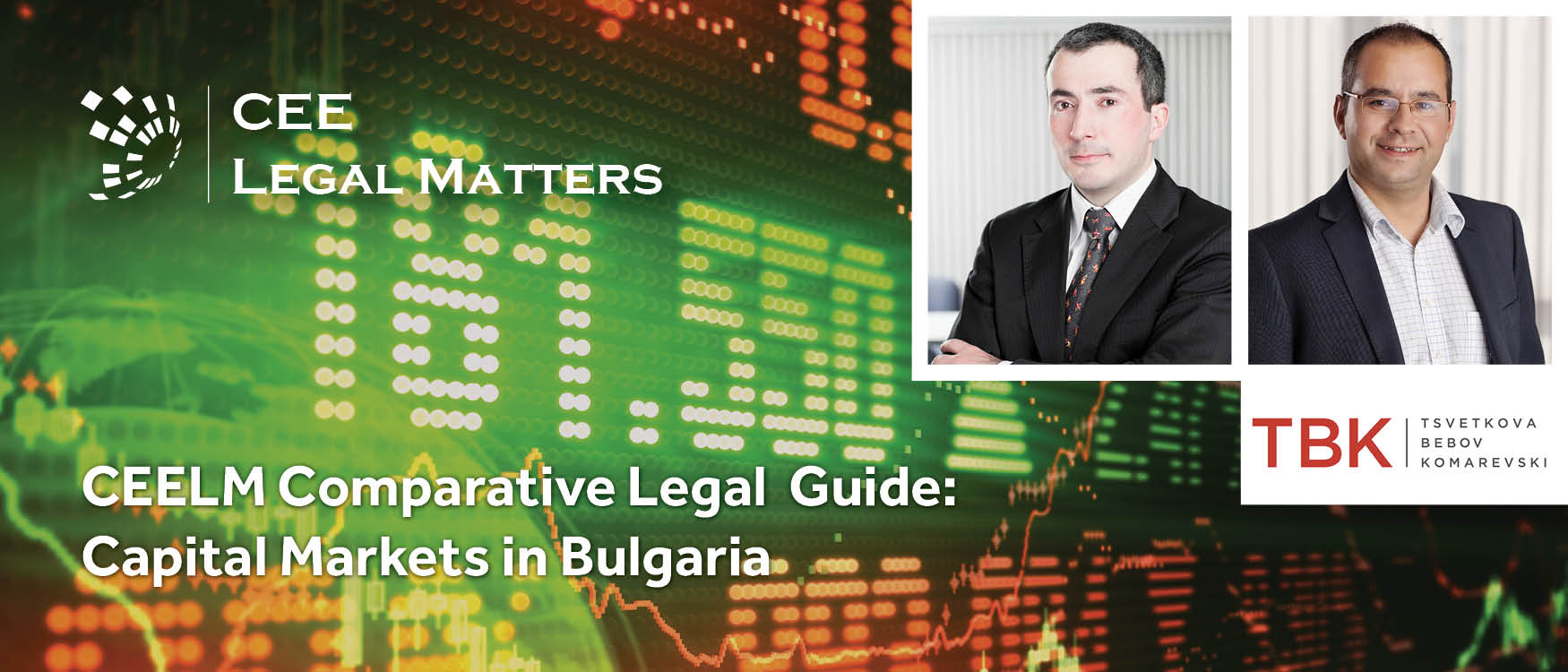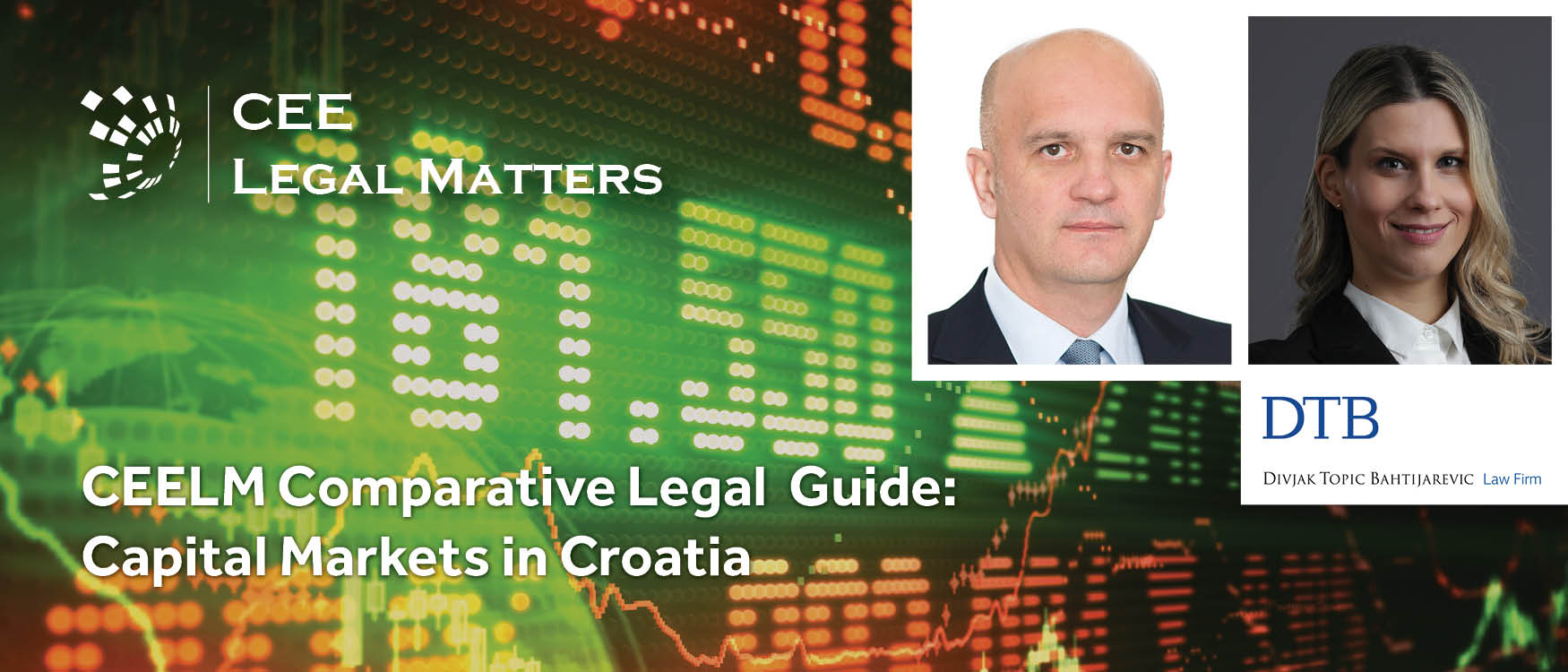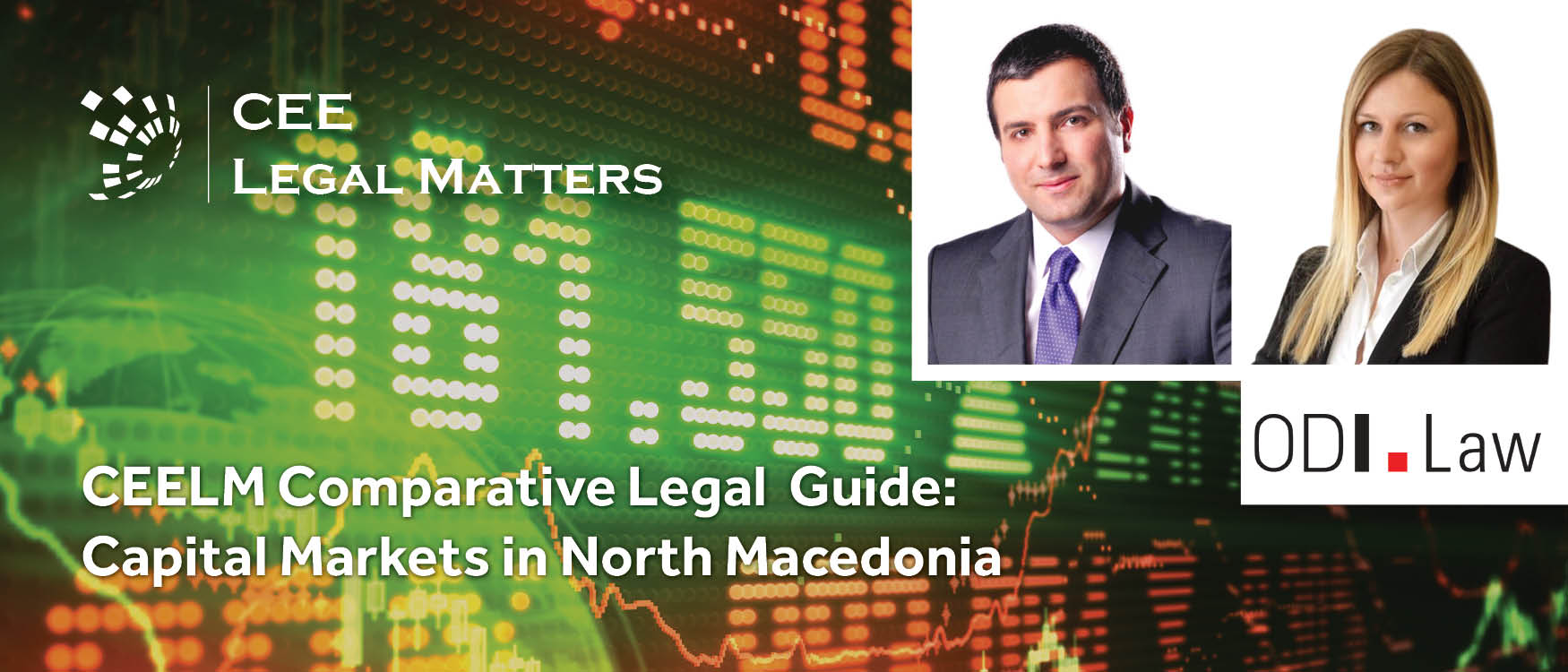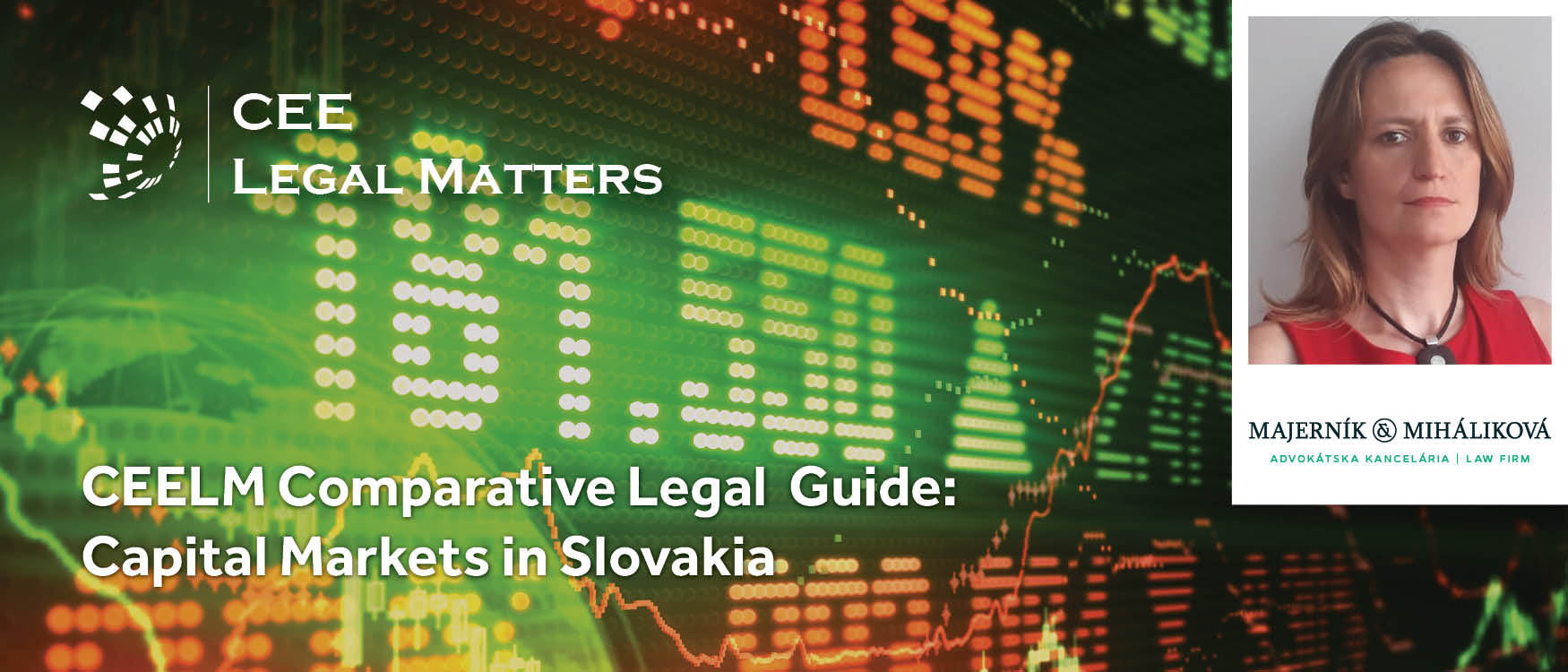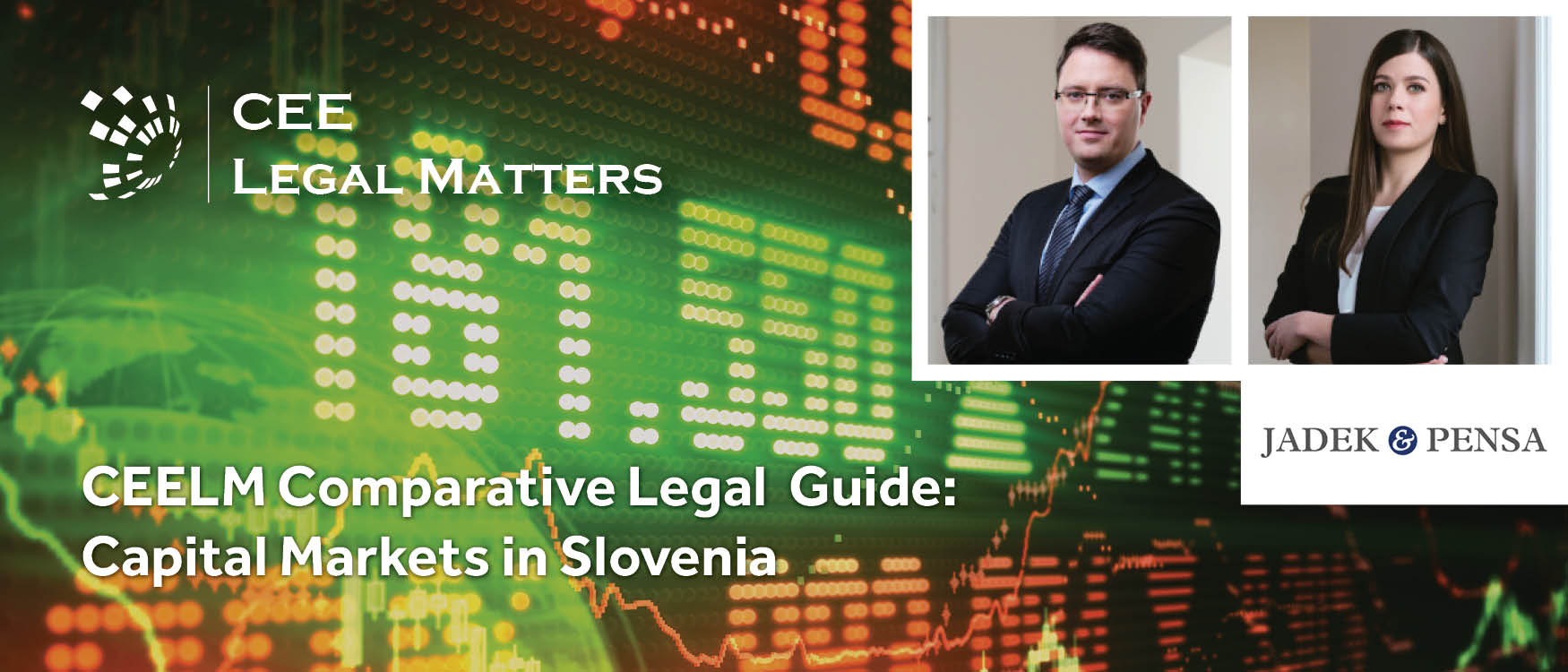Contributed by Walles.
1. Market Overview
1.1. Biggest ECM and DCM transactions over the past 2-3 years
1.1.1. ECM
Initial public offering (IPO) of Lithuanian tour operator AB Novaturas, IPO value - EUR 22.1 million (2018).
Secondary public offering of food producer AB Auga, offering value EUR 36 million (2018).
1.1.2. DCM
USD 300 million bonds of Avia Solutions Group – a Lithuanian aviation services group (2019).
Debut EUR 300 million green bond issue by UAB Lietuvos energija (now IGNITIS GROUP) under its newly established EMTN programme (2017).
EUR 300 million green bond issue by UAB Lietuvos energija (now IGNITIS GROUP) under its EMTN programme (2018).
Debut EUR 300 million bond issue by UAB MAXIMA GRUPA under its newly established EUR 1 billion EMTN programme (2018).
2. Overview of the local stock exchange and listing segments (markets)
2.1. Regulated market
Currently there is only one stock exchange operator in Lithuania – AB NASDAQ Vilnius. It administers a regulated market and non-regulated market.
The regulated market consists of (i) Main List and Secondary list for equity securities, (ii) Bond List for debt securities, and (iii) Fund List for securities issued by collective investment undertakings.
2.2. Non-regulated market
The non-regulated market consists of the alternative market First North, which qualifies as a multilateral trading facility.
3. Key Listing Requirements
3.1. ECM
In order to be listed on the NASDAQ Vilnius stock exchange, a company must meet certain general requirements: i) the company must be of proper legal form and its economic status must not prejudice interests of the investors; ii) the shares to be listed must be free of any encumbrances, entitling their holders to equal rights and be fully paid up. Further requirements depend on the list and market that companies seek for listing. These requirements are listed below.
Issuer’s history of operations – 3 years for the Main List, 2 years for the Secondary List, not applicable for the First North market.
Minimum capitalization – EUR 4 million for the Main List, EUR 1 million for the Secondary List, not applicable for the First North market.
Free float – at least 25 percent for the Main List (or the value of free float must amount to EUR 10 million), not applicable for the Secondary List, not applicable for the First North market.
Prospectus – required for listing on the Main and Secondary lists, not applicable for the First North market.
Reporting – An annual report and semi-annual or quarterly financial reports for listing on the Main and Secondary lists, annual and semi-annual financial reports for the First North market. Listing on First North also requires the relevant issuer to enter into the agreement with a certified advisor of First North which shall advise and ensure that the issuer complies with reporting and other listing requirements.
Accounting - Financial reports to be prepared according to the International Financial Reporting Standards for listing on the Main and Secondary lists, financial accounting standards of choice for the First North market.
Language - Information disclosure in Lithuanian and English language for listing on the Main and Secondary lists, information disclosure in Lithuanian or English language for the First North market.
3.2. DCM
Issuer’s history of operations – 2 years for the Bonds List, not applicable for the First North market.
Minimum denomination of bond issue – EUR 200 000 for the Bonds List, not applicable for the First North market.
Prospectus – required for listing on the Bonds List, not applicable for the First North market.
Reporting – Annual report and semi-annual or quarterly financial reports for listing on the Bonds List, Annual and semi-annual financial reports for the First North market.
Accounting – Financial reports to be prepared according to International Financial Reporting Standards for listing on the Bonds List, financial accounting standards of choice for the First North market.
Language – Information disclosure in Lithuanian and English for listing on the Bonds List, information disclosure in Lithuanian or English for the First North market.
GENERAL NOTE: Stock exchange may wave certain of the requirements, e.g., that of having certain operating history. The decision to wave requirements is based on considerations of the issuer’s financial status, its position in the market, field of activity, reputation, prospects, and other factors.
4. Prospectus Disclosure
4.1. Regulatory regimes (Prospectus Regulation or similar) – equity and debt
Disclosure related to the issue of equity and debt securities as well as related to listing of equity and debt is based on Regulation (EU) 2017/1129 of the European Parliament and of the Council of 14 June 2017 on the prospectus to be published when securities are offered to the public or admitted to trading on a regulated market (the “Prospectus Regulation”).
4.2. Local market practice
In accordance with limits permitted by the Prospectus Regulation, Lithuania does not require prospectus to be prepared for the public offering of securities if the total consideration in the EU is less than EUR 8,000,000, calculated over a period of 12 months.
The public offering of securities in Lithuania when the total consideration calculated over a period of 12 months is between EUR 1 000 000 and EUR 8 000 000 is subject to preparation and publication of the informational document. This document shall describe the issuer and securities to be offered. Requirements for the content of such informational document are established by the securities market regulator, i.e. the Bank of Lithuania. Notably, there is no requirement to have this document approved by any authority.
A listing prospectus is required for listing on a Lithuanian regulated market. However, should listing be sought on the First North market (i.e., the non-regulated market) informational document prepared in accordance with the rules of the First North would suffice. These rules to the large extent are similar to the requirements established by the Bank of Lithuania for the offering of securities when the total consideration calculated over a period of 12 months is between EUR 1,000,000 and EUR 8,000,000. In practice, issuers of such securities prepare only one informational document containing information as required by the regulator and by the First North and uses it both for the offering and for the subsequent listing on First North market.
4.3. Language of the prospectus for local and international offerings
Where an offer of securities to the public is made or admission to trading on the regulated market is sought only in Lithuania, the prospectus shall be drawn up in the Lithuanian language. However, it is also permitted to request the regulator to accept the prospectus prepared in the English language.
As far as international offerings are concerned, the prospectus may be prepared in Lithuanian or English at the choice of the issuer.
5. Prospectus Approval Process
5.1. Competent Regulator
As discussed above, the competent authority for the review and approval of prospectuses prepared in accordance with the Prospectus Regulation is the Bank of Lithuania.
5.2. Timeline, number of draft submissions, review and approval process
The process and timeline for the approval of the prospectus by the Bank of Lithuania is based on the Prospectus Regulation. These requirements do not specify the maximum number of drafts allowed to be submitted. As such, the regulator may request to provide amended drafts as long as it finds that the previous drafts do not meet the standards of completeness, comprehensibility and consistency necessary for its approval and/or that changes or supplementary information are needed.
6. Listing Process
6.1. Timeline, process with the stock exchange
The process with the stock exchange is fairly simple. Apart from the relevant corporate resolutions it requires a formal application of the issuer to AB NASDAQ Vilnius. Usually assessment by the stock exchange takes 2-4 weeks (although the official term is 3 months), upon which the listing agreement is signed and listing commences.
When listing is being sought by a company that is undergoing an IPO, the process with the stock exchange usually is conducted as part of the preparations for an IPO in order to ensure that listing occurs immediately after the completion of the IPO. In such cases the stock exchange makes its assessment prior to the completion of the transactions and facilitates the listing to commence as required by the issuer and IPO team.
7. Corporate Governance
7.1. Corporate governance code / rules (INED, board and supervisory composition, committees)
Companies listed on the regulated market of AB NASDAQ Vilnius are subject the Corporate Governance Code (the “Code”) of the NASDAQ Vilnius stock exchange. This Code lays down the principles and standards of corporate governance. It is not strictly mandatory, but the companies that do not comply with the provisions of the Code must describe and explain such non-compliance within the Corporate Governance Report that is part of the annual reporting.
The Code is drafted in a basis of analogous codes, standards, and principles of other states and international organisations, the key ideas and directions of which are reflected in the Principles of Corporate Governance of the Organisation for Economic Cooperation and Development.
The model of corporate governance required by the Code is in accordance with Lithuanian legal requirements for the corporate governance structure. Accordingly, companies must have a manager (CEO) of the company and either a one-tier management board or a two-tier board (management and supervisory boards). Certain matters are decided by the general meeting of shareholders. Where a supervisory board is not formed, the management board should also perform the supervisory functions.
Until recently one of the principles of the Code was a requirement that companies have an independent member on the supervisory or management board. Recently a similar requirement was introduced into the Lithuanian Law on Companies. According to the law, 1/3 of the members of the supervisory board (or 1/3 of the management board that performs supervisory functions) of listed companies must be independent. The criteria for independence are also provide in the law.
As far as committees are concerned, under the Code, companies listed on the regulated market should form at least nomination, remuneration and audit committees.
Committees should exercise independent judgment and integrity when performing their functions and provide the collegial body with recommendations concerning the decisions of the collegial body. Committees should normally be composed of at least three members, although subject to the requirements of the legal acts, committees may be comprised only of two members as well. Members of each committee should be selected on the basis of their competences by giving priority to independent members of the collegial body. The chair of the management board should not serve as the chair of committees.
7.2 Any other ESG considerations
There are no formal requirements related to ESG except for the requirement that large listed companies with an average number of employees exceeding 500 to prepare a Social Responsibility Report as part of the annual reporting. This report shall cover matters related to protection of environment, social and staff issues, protection of human rights, prevention of corruption and bribery.
8. Documentation and Other Process Matters
8.1 Over-allotment (greenshoe or brownshoe structure)
An over-allotment option is a common element of public offerings by Lithuanian entities. Over-allotment is also closely related to stabilisation activities. The legal framework for over-allotment and stabilisation is entirely based on the requirements established by Regulation (EU) No 596/2014 on market abuse and by Commission Delegated Regulation (EU) 2016/1052 of 8 March 2016 supplementing Regulation (EU) No 596/2014 of the European Parliament and of the Council with regard to regulatory technical standards for the conditions applicable to buy-back programmes and stabilisation measures.
8.2. Stock lending agreement – whether it is used and whether there are any issues (tax, takeover directive)
Stock lending arrangements are common for IPOs involving issues of new shares. Due to Lithuania’s procedure for the registration of new shares, such new shares sold during IPOs cannot be listed immediately after the settlement of the IPO (it might take from 1 to 2 weeks for such shares to be registered and listed). In order to avoid this time gap it is customary for the underwriters to borrow existing shares from the current shareholders. Such borrowed shares are distributed to the subscribers during IPO. Borrowed shares are repaid by the underwriters upon registration of the new shares.
Although such stock lending is common there are no clear taxation rules related to this activity and thus tax impact for each participant shall be assessed beforehand on a case by case basis.
8.3. Stabilisation – whether allowed and on what terms (MAR, local regimes)
Please see information under item 8.1 above.
9. Ongoing Reporting Obligations (Life as a Public Company)
9.1. Annual and interim financials
As disscussed above, issuers listed on the regulated market must prepare and publish annual and semi-annual (or quarterly financial) reports prepared according to the International Financial Reporting Standards (this requirement does not apply to certain issuers, e.g., issuers of debt securities with denominations of not less than EUR 100,000).
9.2. Ad hoc disclosures
In addition to the above, issuers are obliged to make public disclosures in accordance with requirements of Regulation (EU) No 596/2014 on market abuse which, amongst other items, regulates public disclosure of inside information and disclosure of manager’s transactions.
Besides that, the issuers must disclose information about any person who has acquired 5, 10, 15, 20, 25, 30, 50, 75 and 95 per cent of the voting rights in that issuer. This obligation also applies where the specified limits are exceeded in the descending or the ascending order. A similar obligation also applies with respect to persons holding other types of financial instruments (e.g., options, swaps, etc.) that under the terms of those instruments give rise to acquisition of voting rights.
The issuers also must disclose acquisitions and transfers of own shares (votes), changes to the rights attached to the financial instruments issued by the issuer and changes to its constitutive documents (e.g., Articles of Association). Special rules and disclosure regimes also apply in relation to takeover, sell-out, and squeeze-out events. These requirements are generally in line with rules established by Directive 2004/25/EC on takeover bids.







